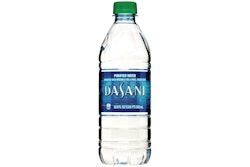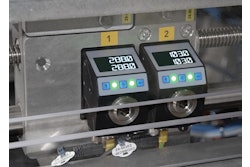Of consumer packaged goods, the package has two types of features: functional and aesthetic. The former relates to how the package performs (i.e. protects, opens, closes, dispenses, etc.). The latter relates to how the package looks, that is to say, its design. This article addresses package design as intellectual property and the various ways it’s protected with patent, trade-dress, and copyright. (Trademarks are discussed to distinguish them from trade-dress.)
Package design differentiates and can be leveraged to a competitive advantage. The best competitive advantages are those that are sustainable, so it’s good strategy to protect package design with one or more of the aforementioned.
Design patents. In the U.S., patents are issued by the United States Patent and Trademark Office (USPTO). There, an examiner decides whether the design meets the criteria of, first, being decorative and non-functional, and, second, being original (translated as novel and non-obvious.) A design patent provides protection for 14 or 15 years (depending on when it was filed.) Design patents are not renewable.
Trade-dress. The package might not be the only component of trade-dress (which also might include the product); however, the package always is a component. Trade-dress portrays the overall visual impression of a packaged product. Trade-dress exists regardless of whether it’s registered with the USPTO, but registration has benefits, if none other than giving notice. Registration is good for 10 years and can be renewed for another 10. The requirement for registration is that the trade-dress be distinctive.
Copyright. What component of the package carries artwork and text—features that can be copyrighted? The label, of course. Upon its creation, a label receives common law copyright protection. Statutory protection, however, is obtained by registering with the U.S. Copyright Office. Either way, a copyright is good for the lifetime of its owner, plus an additional 75 years. Copyrighting has a trio of requirements: fixation, expression, and originality, and each is met by labels. The artwork and text are fixed onto the label. The label is the medium through which the ideas represented by the artwork and text are expressed. As for originality, the bar is low and subjective.
Trademarks. A trademark should not be confused with trade-dress. A package is a component of trade-dress (overall visual presentation). A trademark, on the other hand, can be a word, slogan, symbol, name, or icon, just to name a few embodiments. Trademarks are acquired through the USPTO. The requirements are that a trademark be distinctive and either presently be in use or intended to be in use within a certain time. There is no expiration for trademarks, as long as they remain in commercial use. The association between packages and trademarks can be generalized this way: the former often serves as a medium for the latter.
Infringement. The discussed measures don’t protect against the possibility nor the occurrence of infringement (unauthorized use); rather, they grant the right to sue in federal court. In all cases, the burden-of-proof resides with the accuser. If the accused asserts a defense, it typically is that there was no infringement, and/or the patent, trade-dress, or copyright should not have been granted because the registration was flawed in some fundamental way.
Systems approach to IP management. Every package design project should reflect a consideration for its effects on the intellectual property portfolio. A package design should be evaluated for its overall (gestalt) impression, vis-à-vis trade-dress and patentability. Individual elements of artwork, text, etc., should be evaluated for their potential for copyright.
The absence of a systems approach invites suboptimal decisions. Examples follow. Brand management has relatively high turnover, and some newly-installed brand-managers, wanting to evidence their ownership, commission package design changes. Any retail store has products in packages carrying the claim, “New look, same great taste (or other quality).” It should be kept in mind that redesigns might trigger the need for new registrations.
A related but separate issue is the frequency of redesigns. In trade-dress infringement cases, for example, the courts consider whether the trade-dress is “inherently distinctive,” but also whether the trade-dress has taken on “secondary meaning,” legalese for whether consumers singularly associate the trade-dress with its owner. Such an association is achieved across time and can be undermined by too-frequent redesigns.
So who, by title/department, should provide inputs to a systems approach to the management of packaging-related intellectual property? At the very least, packaging, product development, marketing, and legal should do so. The thinking should be that intellectual property is an important component of competitive strategy and must be developed wisely and protected vigorously.


























